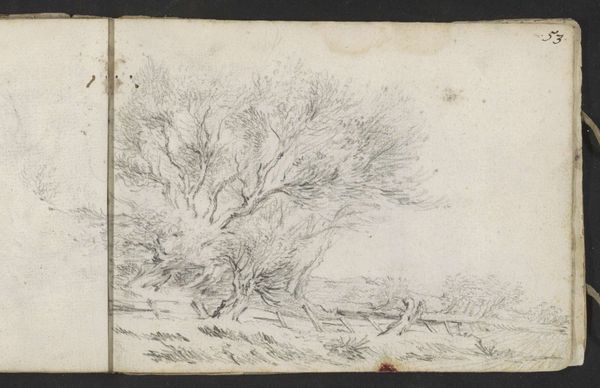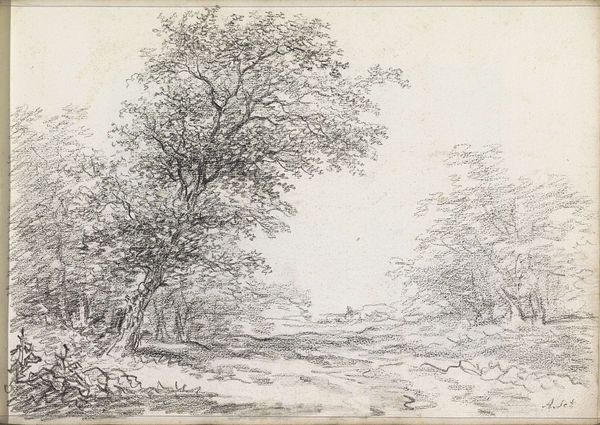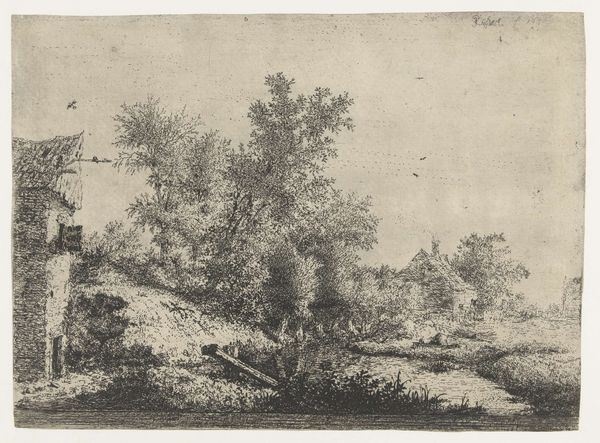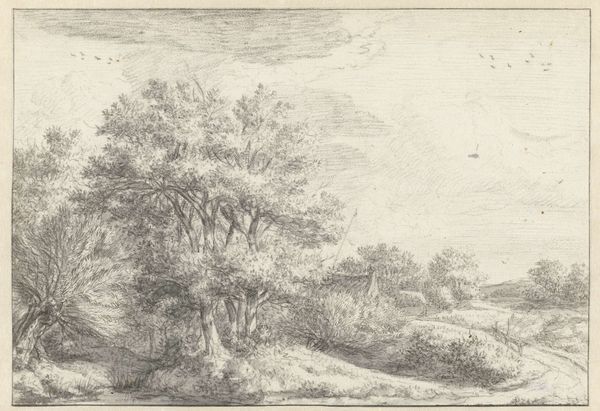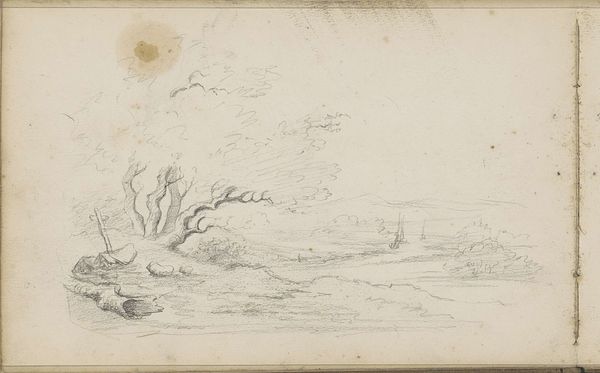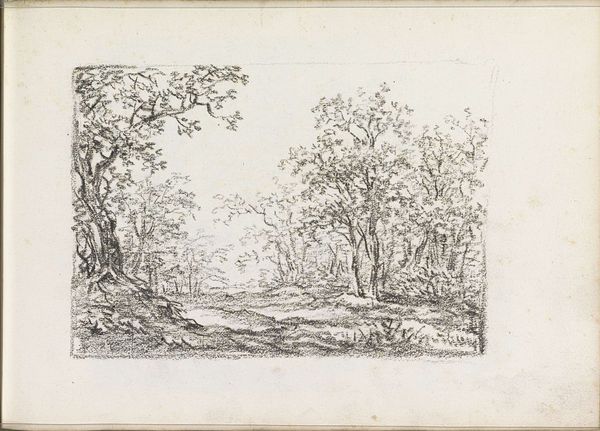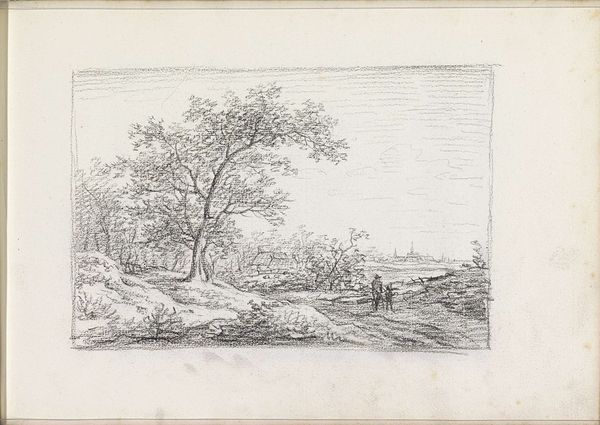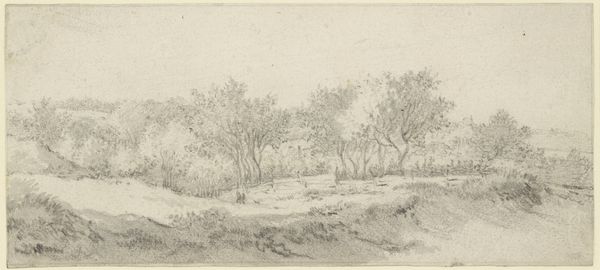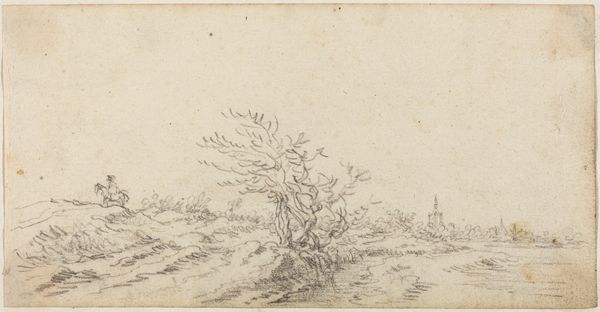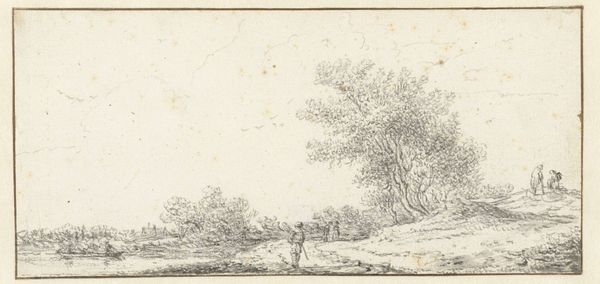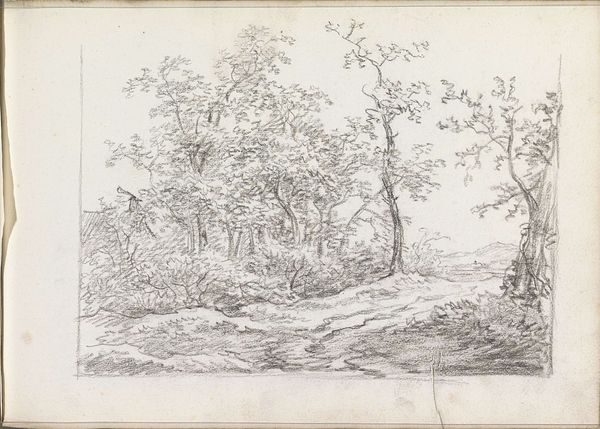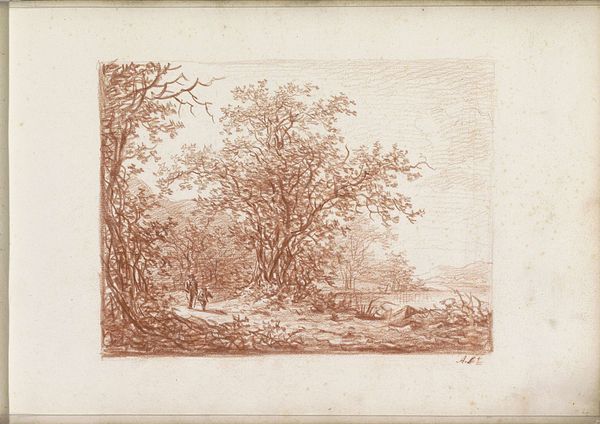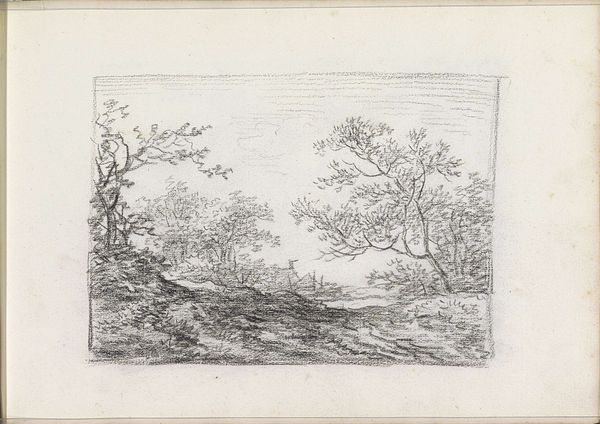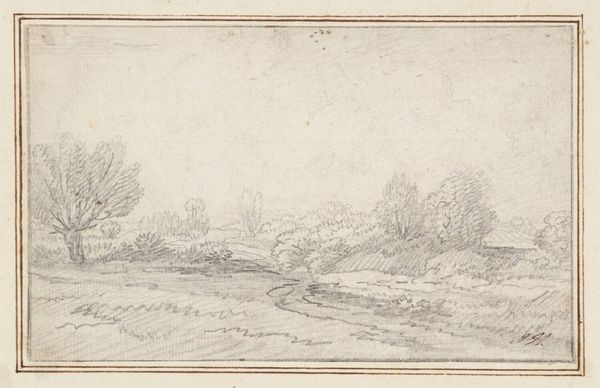
drawing, pencil, graphite
#
drawing
#
dutch-golden-age
#
landscape
#
coloured pencil
#
pencil
#
graphite
#
realism
Copyright: Rijks Museum: Open Domain
Curator: Let's discuss "Duinweg," a graphite, pencil, and colored pencil drawing made around 1634-1635 by Gerard ter Borch, currently held at the Rijksmuseum. It immediately strikes me with its subdued tones and intricate textures. The composition guides the eye gently along the sandy path. Editor: The landscape feels rather melancholy, doesn't it? Sparse trees rendered in graphite… I can't help but read it through a lens of colonial impacts. Given the Dutch Golden Age's heavy reliance on global trade and exploitation, how does this seemingly benign landscape participate in that economy of extraction? Curator: That’s an intriguing perspective. The landscape tradition certainly served various ideological functions, one of which could involve obscuring or normalizing colonial endeavors. Ter Borch himself moved in circles tied to wealth derived from these activities. Editor: Exactly. How does the artist’s technique underscore or subvert these power structures? Note the deliberate simplicity, almost like a fleeting impression. The rendering minimizes traces of human labor, indirectly supporting ideologies of expansion in the "unclaimed" or "empty" landscape. Curator: But shouldn’t we also consider the drawing on its own formal merits? The light is exquisitely captured; Ter Borch utilizes hatching to build tonal variations that describe depth and distance remarkably well for such a simple drawing. Editor: And yet, isn’t that emphasis on pure visual experience precisely the kind of formalist detachment that avoids addressing deeper societal dynamics? Even the very act of focusing solely on technique is an act with political implications. Curator: Point taken. Seeing “Duinweg” now, understanding its cultural era as an entanglement of power and its own perception, creates an intense viewing experience. Editor: Indeed, thinking about art's purpose outside the gallery, embedded with these realities and our understandings of them—it adds critical richness to an artistic experience that can become powerful beyond measure.
Comments
No comments
Be the first to comment and join the conversation on the ultimate creative platform.
